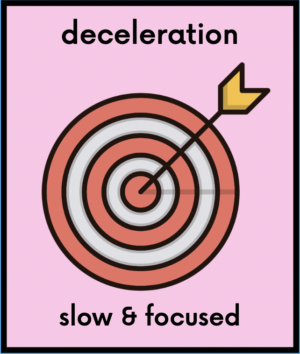

While progress in the writing is an integral part of a student’s success in ENA 101, there is some connection of a student’s mastery of the writing process with how they would potentially advance to that mastery, using “Habits of Mind.” According to Arthur L Costa and Bena Kallick, in Habits of Mind: A Developmental Series, the habits that students can adopt in a classroom setting are “an identified set of 16 problem solving, life related skills….”. Just as an incoming student at LaGuardia Community College would take a First Year Seminar course and would be expected to learn skills such as listening, planning, anticipating problems and coming up with solutions, similarly, these habits of mind, as Costa and Kallick point out “provide the individual with skills to work through real life situations that equip that person to respond using awareness (cues), thought, and intentional strategy in order to gain a positive outcome.” As such, three of Costa and Kallick’s skills and/or concepts will be discussed and how they can transform a student’s thinking about the writing process in ENA 101—they are Applying Past Knowledge to New Situations, Thinking about Thinking (Metacognition), and Thinking Interdependently all while using the process of Deceleration.
Applying Past Knowledge to New Situations:
At LaGuardia Community College, many students who enter ENA 101 come from different countries, are familiar with a writing style different from American English, and can speak a language other than English. In ENA 101, the focus of an instructor, before the start of any semester, should be to collect data from students regarding what they already know and understand about the writing process from their own countries and try to fill in gaps and answer questions about the American writing process. It should not be assumed that students are ready to dive into American English, especially since in some countries, writing is only reserved for final examinations when students are asked to regurgitate information through rote memorization from textbooks. This can be detrimental to students when they are asked to think independently and creatively during student-teacher exchanges in American classrooms, and this can potentially stunt a student’s growth in writing effectively and creatively. Costa and Kallik introduce the skill, Applying Past Knowledge to New Situations, in which students “Use what is learned; Consider prior knowledge and experience; Apply knowledge beyond the situation in which it was learned.” Fostering an environment where students can feel comfortable discussing what they know about the writing method can be both nuanced and a stress-reliever for students (see activity 1). In this way, the instructor can introduce the writing process in such a way where some of the students’ past knowledge about the writing process can be applied to writing assignments.
Thinking about Thinking (Metacognition):
Students in ENA 101 often find themselves stuck when it comes to putting thoughts down on paper. Many times, a student does not know where to begin when given a brainstorming exercise or asked to write a paragraph about their own thoughts. This is where Costa and Kallik’s skill, Thinking about Thinking (metacognition) comes into play. According to the authors, this skill requires students to “[be] aware of own thoughts, feelings, intentions and actions; Knowing what [to] do and say [that] affects others; Willing to consider the impact of choices on [ themselves] and others.” It would be helpful to create 5 to 10 minute-minute group exercises where students can come together to answer questions relating to college readiness, or student group interaction (See Exercise 2). Answering questions where ENA students can interact with one another will force students to think metacognitively and come up with solutions that can prompt language acquisition and team building.
Thinking Interdependently
Thinking Interdependently in ENA requires work since many students are coming into the classroom with limited knowledge with group work in American Higher Education. Most students have learned how to think independently, not interdependently. According to Costa and Kallik, Thinking Interdependently means “Willing to work with others and welcome their input and perspective; Abide by decisions the work group makes even if I disagree somewhat; Willing to learn from others in reciprocal situations.” Small group work settings in ENA 101 can be a comfortable space for students who are shy, and don’t enjoy speaking in large class settings. Small 5–10-minute exercises (See Exercise 2) can help students interact with one another and report back to the instructor with findings about a particular topic.
Deceleration and Conclusion
While most instructors are constrained by time, either by the standards set forth by the department or self-imposed, deceleration, or the act of slowing down with activities or lesson plans eases the burden of completing tasks for the student as well as for the instructor. The idea of deceleration is an important element to implement in ENA 101 since the extra hours are, in fact, designed to help students “catch up” or hone their skills in writing. With the practice of deceleration and implementing habits of mind, students can be successful in ENA 101 and find themselves to be better equipped for college level writing in their English classes and beyond.
References:
Habits of Mind: A Developmental Series by Arthur L Costa and Bena Kallick



Leave a Reply